The Sony Ericsson Xperia Play: Where Do You Want To Take Your Gaming Today?
by Brian Dipert on August 8, 2011 1:26 PM EST- Posted in
- Smartphones
- Sony
- Android
- Xperia Play
- Mobile
After deciding whether or not I'll be able to comfortably tote a cellular handset around in my blue jeans, my next evaluation step is to test its reception capabilities...because, after all, it's first and foremost a phone. Up front, I should note that I was reliably able to notably degrade the Xperia Play's received signal strength by holding it in either hand with my fingers pressed against the bottom half of one side and my palm aligned in the same location on the other side, in a natural hand-holding position:
In my upstairs bedroom, for example, the Xperia Play read -81 dBm when I wasn't touching it, but -91 dBm or worse when I held it as shown above. Stronger-reception environments may not experience the same degree of degradation (or, for that matter, dropped-call outcome) and, as is already well documented at this point, my iPhone 4 has its own 'Antennagate' issues. The previously mentioned gel case neatly addresses the iPhone 4's design shortcomings, and I suspect that the same would be the case (pun intended) for the Xperia Play.
All of the measurements that follow were taken, therefore, with the mobile phones not in my hand. I'm based in Truckee, CA, a small town in the northwest corner of Lake Tahoe that's blessed with an atypically robust telecommunications infrastructure courtesy of the large number of Silicon Valley residents who own vacation homes in the area. The Xperia Play I'm reviewing is a Verizon model, and Verizon happens to have the most robust coverage here of any of the four carriers. AT&T coverage is somewhat weaker, and I've therefore supplemented it with a Wi-Ex zBoost YX510-PCS-CEL cellular booster.
The YX510-PCS-CEL is a dual-band model that also comprehends Verizon's voice and data frequencies, so I've provided internal measurements both with it on and off. And for comparison sake, I've also listed the received signal strength measured by my Verizon-tailored iPhone 4, which I've jailbroken and from which I've therefore obtain dBm measurements courtesy of a SBSettings switch (although labeled as being exclusively for 'GSM' use, it works equally well for CDMA):
| Comparative Reception | ||||||
| Xperia Play | iPhone 4 | |||||
| Interior: upstairs bedroom (booster on) | -81 dBm | -78 dBm | ||||
| Interior: upstairs bedroom (booster off) | -81 dBm | -78 dBm | ||||
| Interior: downstairs living room (booster on) | -75 dBm | -74 dBm | ||||
| Interior: downstairs living room (booster off) | -75 dBm | -74 dBm | ||||
| Exterior: front deck | -59* dBm | -63 dBm | ||||
A few comments; first off, the YX510-PCS-CEL (whose retransmit antenna is also located in the downstairs living room) clearly doesn't seem to be having any positive Verizon reception effect, at least in the test locations I chose! Premium cellular boosters are intentionally designed to disable their amplification effects whenever the ambient signal is already sufficiently high, so perhaps this explains what I'm seeing (or more accurately, not seeing). And when measuring reception outdoors, I initially placed the Xperia Play to the right of and a couple of inches away from the iPhone 4 on the deck railing, wherein I received a -56 dBm result on the Sony Ericsson handset.
Since this result was notably divergent from what I'd gotten inside, I decided to swap the locations of the two handsets...wherein the Xperia Play reported -62 dBm of signal strength! Therefore, I averaged the two results for the asterisk'd -59 dBm number you'll find in the above table. This situation exemplifies the Achilles Heel of any testing of this nature, since results are dependent not only on handset location but also the presence or absence of any ambient degraders (close-proximity spectrum broadcasters, weather effects, intermediary walls and other attenuators, etc). In contrast, by the way, the iPhone 4 delivered consistent -63 dBm data in both locations.
With respect to phone functions, the Xperia Play was passable albeit not spectacular. Volume from the conventional speaker and speakerphone was sufficient for all but the highest ambient noise environments. Folks on the other end of the connection almost always claimed that they could hear me clearly, although I would have preferred that Sony Ericsson include a multi-microphone array for ambient noise suppression purposes, either done in software (aka Motorola Droid) or silicon (Nexus One and iPhone 4, via an Audience audio processor).
And regarding data transfer speeds, I returned to the front deck and captured a few screenshots of the Xperia Play running Ookla's Speedtest.net application:
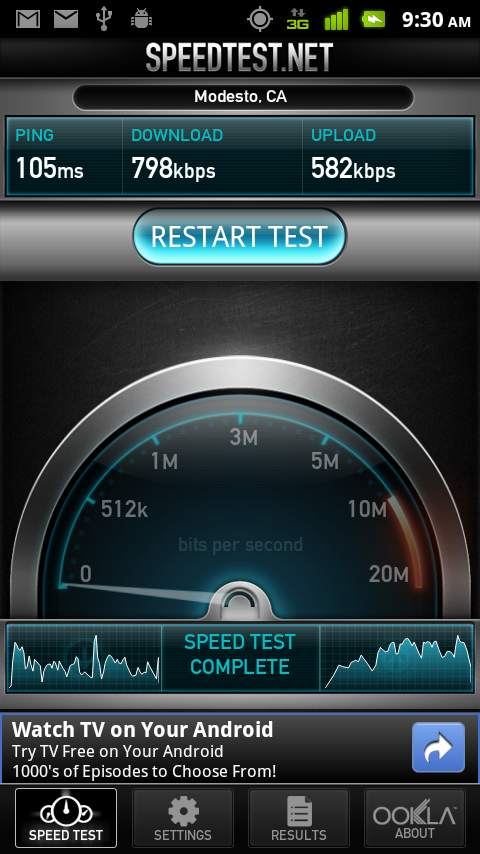
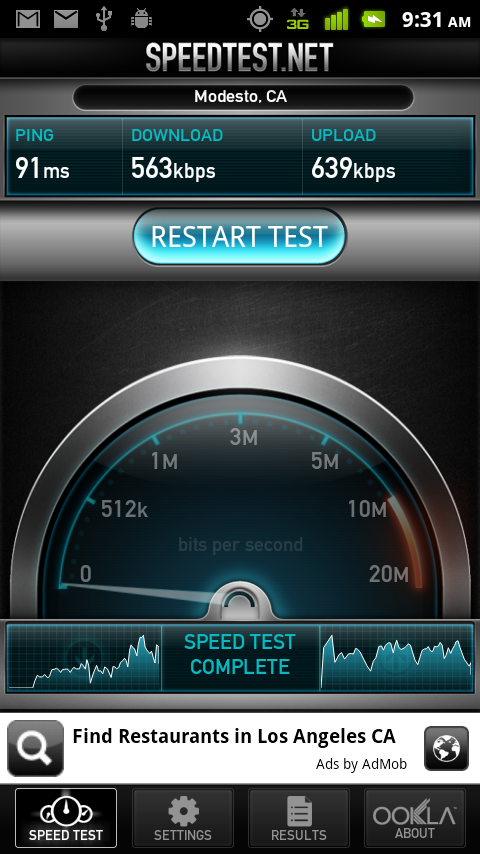
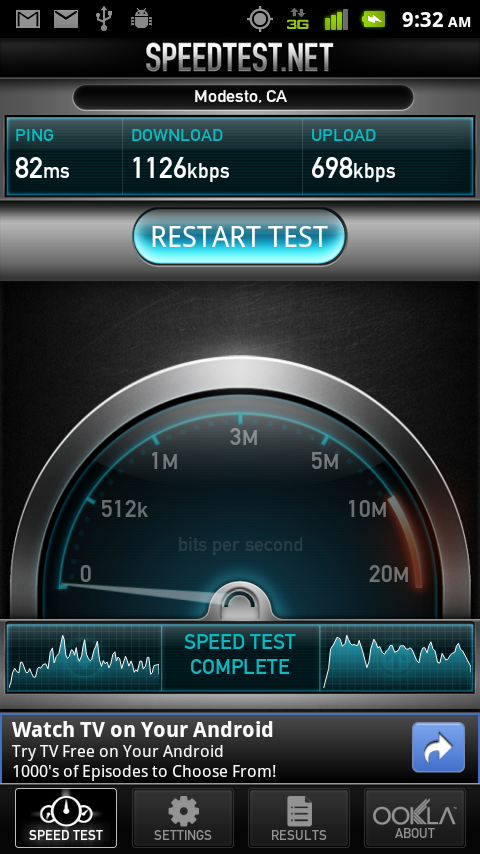
The Xperia Play advertises itself as being compatible not only with the older EV-DO Rev. 0 standard but also the newer, faster Rev. A approach. Based on the data above coupled with my prior experiences with CDMA cellular data-cognizant devices, I'm inclined to believe Sony Ericsson. The randomness of the results is somewhat intriguing; I presume it reflects a time-varying network load on whatever cell tower I happened to be connected to at the time. But considering that I saw peak download speeds of over 1.5 Mbps, for example, I'm confident in the Xperia Play's EV-DO Rev. A capabilities. For comparison's sake, here are some sequential screenshots of Speedtest.net running on my Verizon iPhone 4:


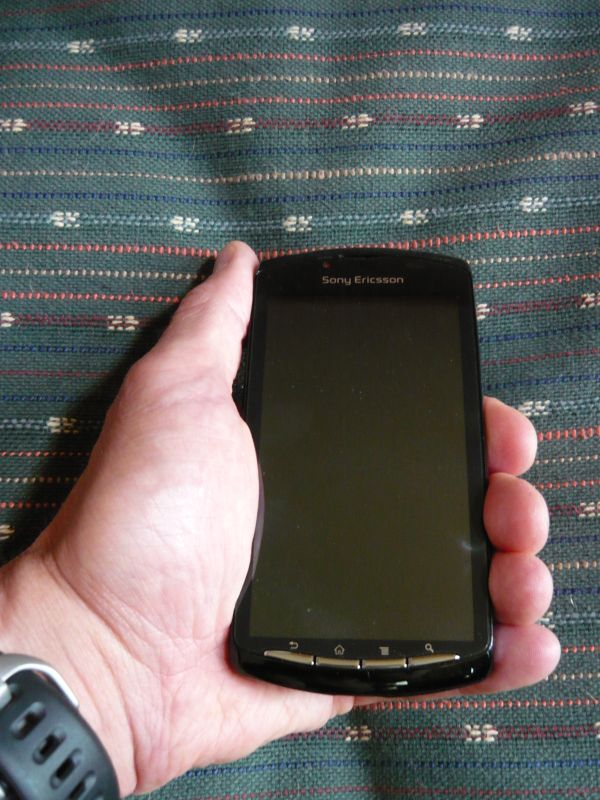
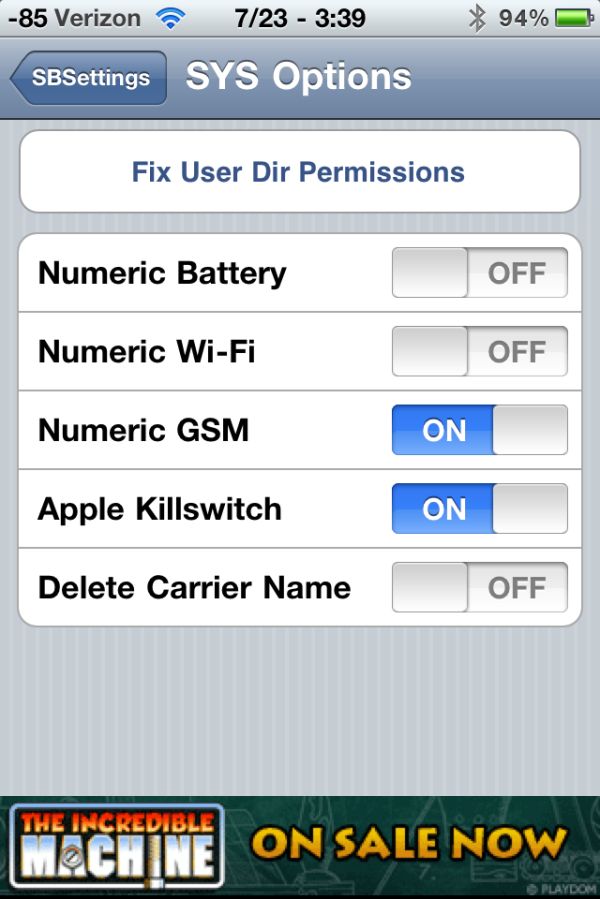
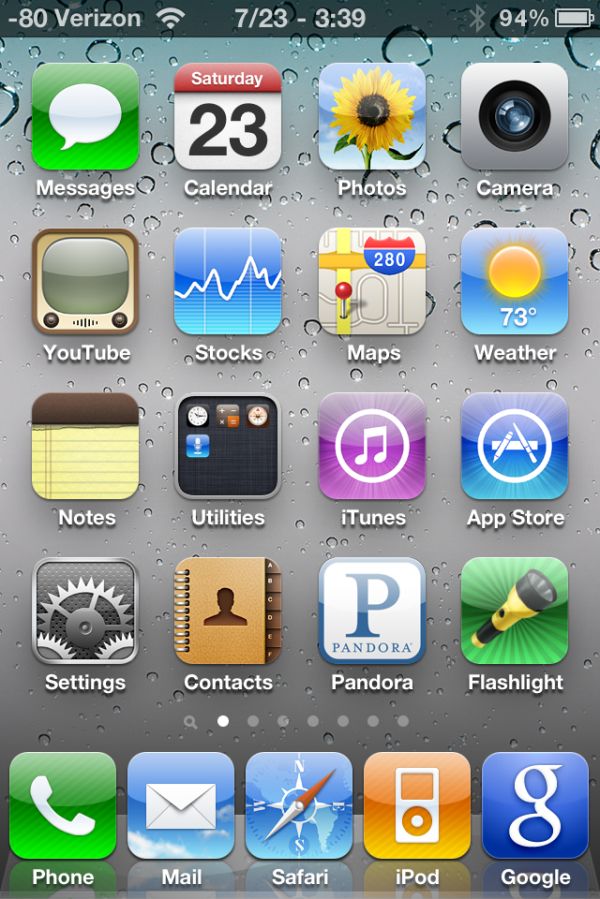
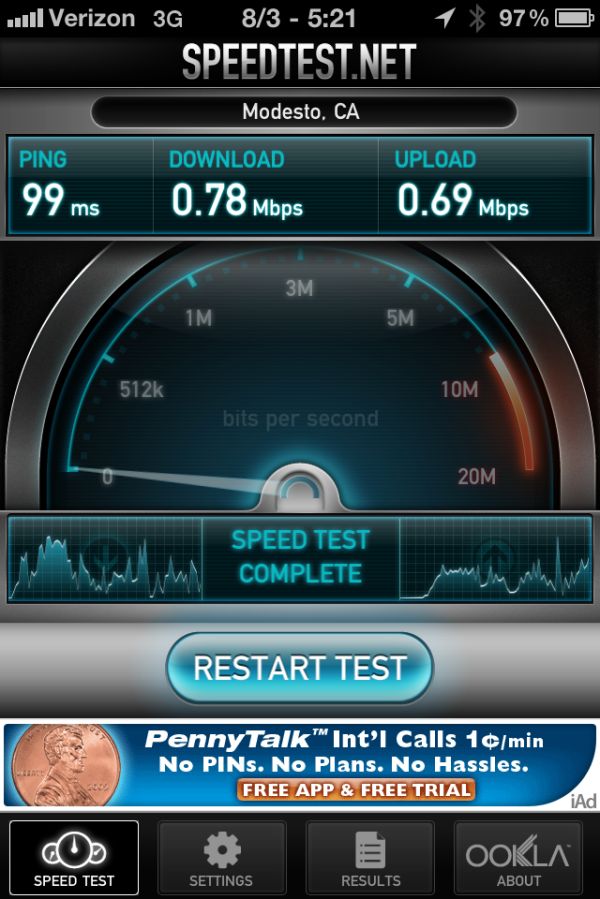
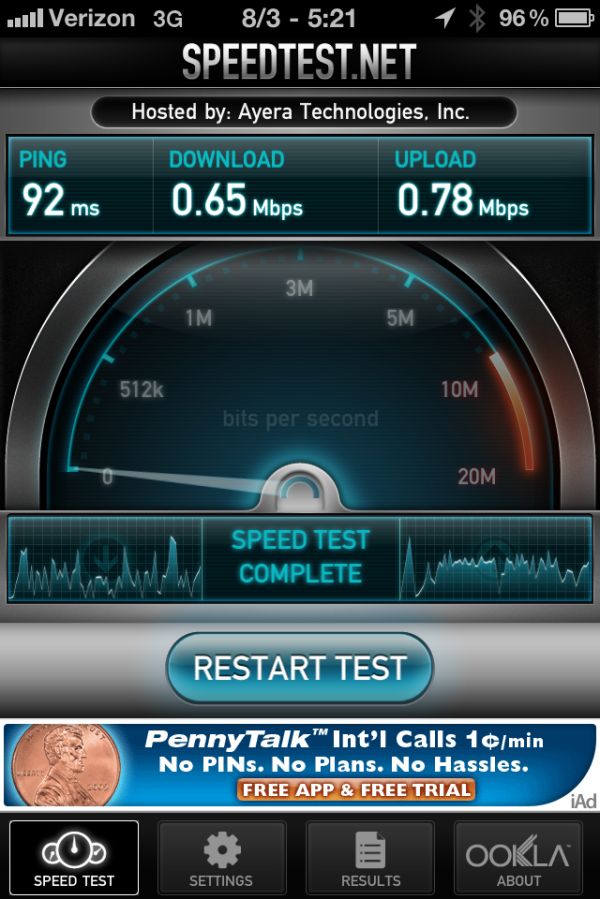
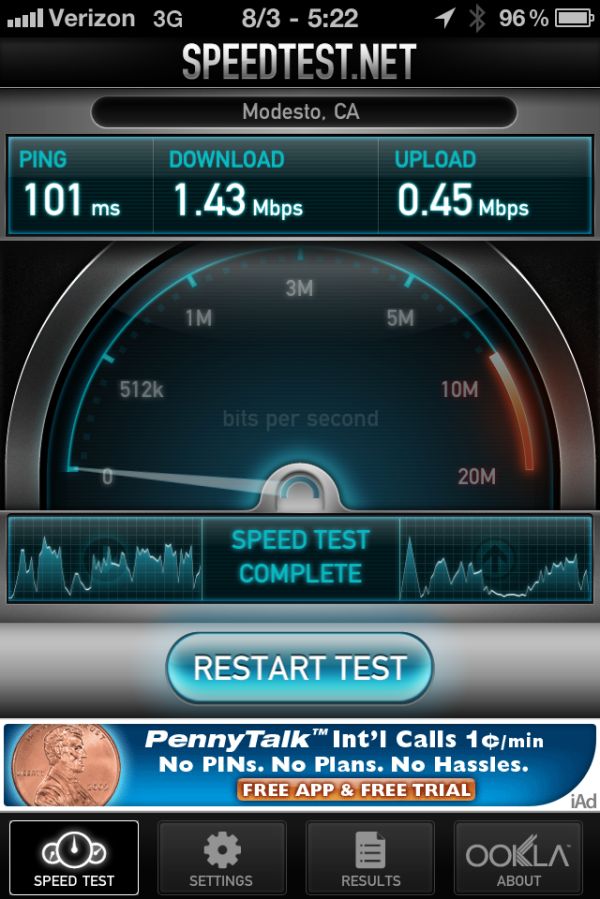








34 Comments
View All Comments
SilthDraeth - Monday, August 8, 2011 - link
I wonder why they chose a Dpad for directional control vs a flat analog slider pad reminiscent of the Nintendo 3ds?I would have thought the analog slider pad would have better mimicked the capacitive touch circle control. In fact I probably would play some more N.O.V.A 2 if my Samsung epic had a analog slider pad.
I wonder, if maybe they didn't do it, because at the time the phone was designed and released, the 3DS hadn't came out, and no one had thought of it yet...
LordOfTheBoired - Tuesday, August 9, 2011 - link
Interesting theory, but there's a problem with it... the PSP had a flat analog slider long before the 3DS did.It's also an input that is largely reviled by the fans, and not without justification.
Though the fans think the problem is that it isn't a "real stick"(actually, two of them) rising high above the face of the device like a home gamepad(specifically, like the DualShock series of gamepads), and to hell with pocketability. See also: the upcoming PS Vita.
Personally, I think it was just a poorly-considered implementation of a good device.
The fault as I see it is that it's topped with a convex thumb-piece and the centering springs are fairly high-tension. Though the awkward location doesn't help matters either(I'm pretty sure the slider was shoehorned in late in the system's development and it was intended to be digital-only).
I'm rather disappointed to know the capacitive disks don't work, as I thought they were a good idea. Especially as it avoided the preference for cardinal directions in dual-spring potentiometer designs(a very strong preference in the case of the PSP's high-tension slider).
Guspaz - Tuesday, August 9, 2011 - link
Good idea, terrible implementation. While I'm not a PSP owner,and have only played with them a bit, my experience was that the problems were:1) Horribly positioned. My hand cramped up using the analog nub on the PSP while simultaneously holding the PSP with that hand
2) Concave form factor made it harder to grip
3) Rough texture was uncomfortable
4) Spring put up too much resistance
5) Too small and not enough range of motion
The 3DS circle pad attempts to address all of these complaints, and while it isn't quite perfect, it's a good enough implementation that it can compete with "real" analog sticks rather nicely. Of course, by giving it good positioning, it makes the 3DS' d-pad uncomfortable to use, but you can't have it both ways. Anyhow, a circle-pad would certainly fit on something like the xperia play. In fact, I wish that the circle-pad was on more devices, but unfortunately Nintendo's patents will prevent that. Hopefully Sony can come up with their own similar slider pad that, if not identical to the circle pad, at least makes the same corrections.
MacTheSpoon - Monday, August 8, 2011 - link
This first gen phone is underwhelming, but I hope they stick with the concept and iron out the problems. The underlying concept of a smartphone with physical game controls seems spot-on. I'd love to play console-type games on my phone using physical controls instead of multitouch.ImSpartacus - Monday, August 8, 2011 - link
The first gen phone is underwhelming and ever single phone after that will follow similarly.Why? The Vita. I can't understand why Sony thought it was a good idea to split the Vita and Xperia Play. If you want to compete with iOS gaming, you can't do it with two distinct devices. Sony needs a unified gaming device. They are welcome to sell a wifi version (a la iPod Touch), but their flagship needs to be a phone.
seamonkey79 - Monday, August 8, 2011 - link
^ ThisExodite - Monday, August 8, 2011 - link
Because Sony isn't the same company as Sony Ericsson?It's not even a subsidiary, indeed SE is made up from far more of the old Ericsson phone division than it is Sony.
This isn't in any way, shape of form a 'Sony' phone - Sony doesn't do phones.
ImSpartacus - Monday, August 8, 2011 - link
Then Sony should do phones.Zoomer - Tuesday, August 9, 2011 - link
Not outside Japan, anyway.Guspaz - Tuesday, August 9, 2011 - link
Sony Ericsson is 50% owned by Sony and 50% owned by Ericsson. They make Walkman-branded phones, Cyber-shot branded phones, BRAVIA-branded phones... Sony and Ericsson could clearly have come to an agreement if Sony had wanted to do this all in one device.After all, the XPeria Play and Vita are similar architecturally. They both use ARM SoCs (a departure for Sony in a game console), although the XPeria Play is using a Qualcomm Snapdragon with an Adreno GPU while the Vita is using a quad-core ARM Cortex A9 with a PowerVR SGX534MP4.
In actual fact, the hardware in the Vita is identical to the iPad 2 except doubled (same CPU/GPU, just double the cores each).